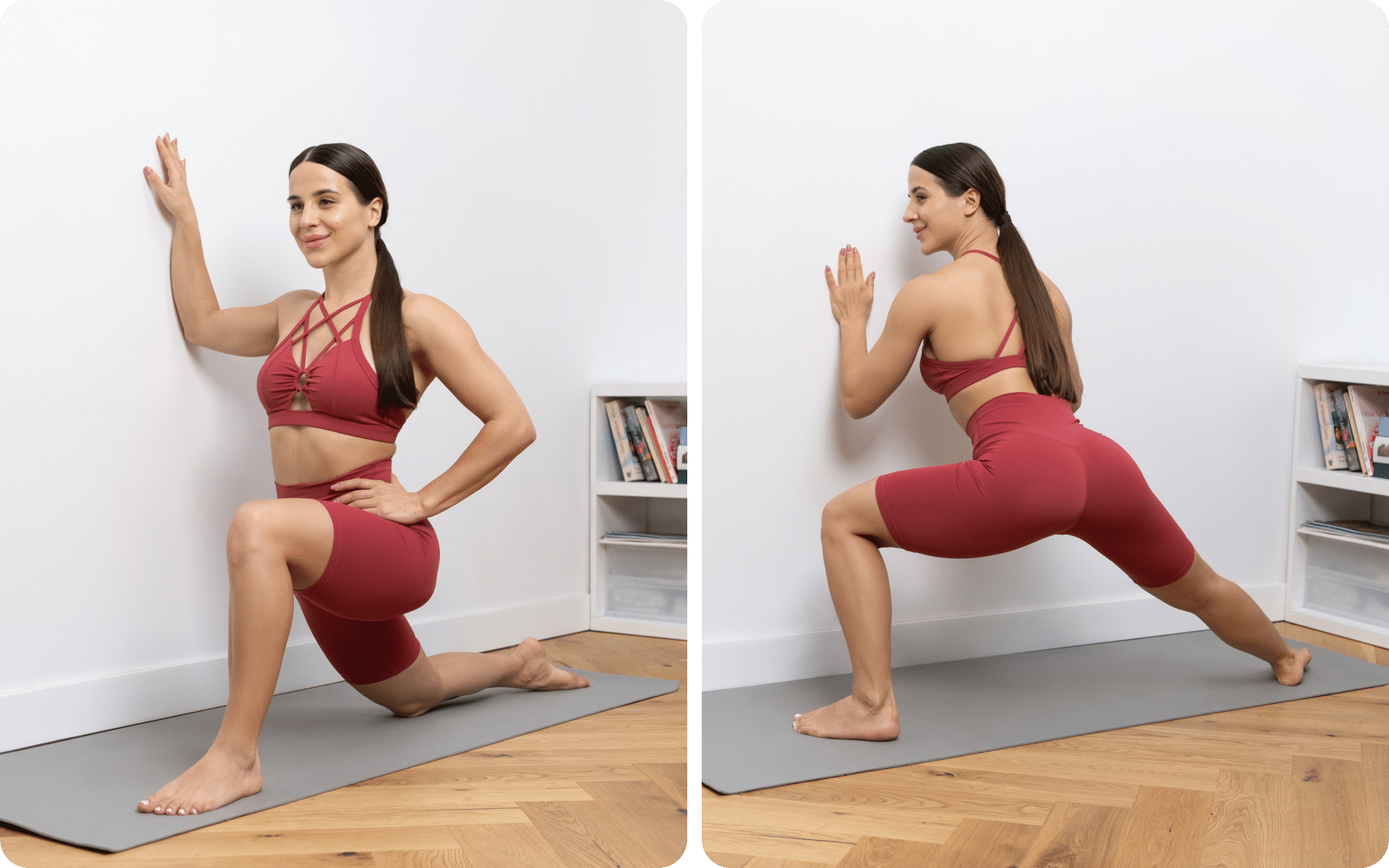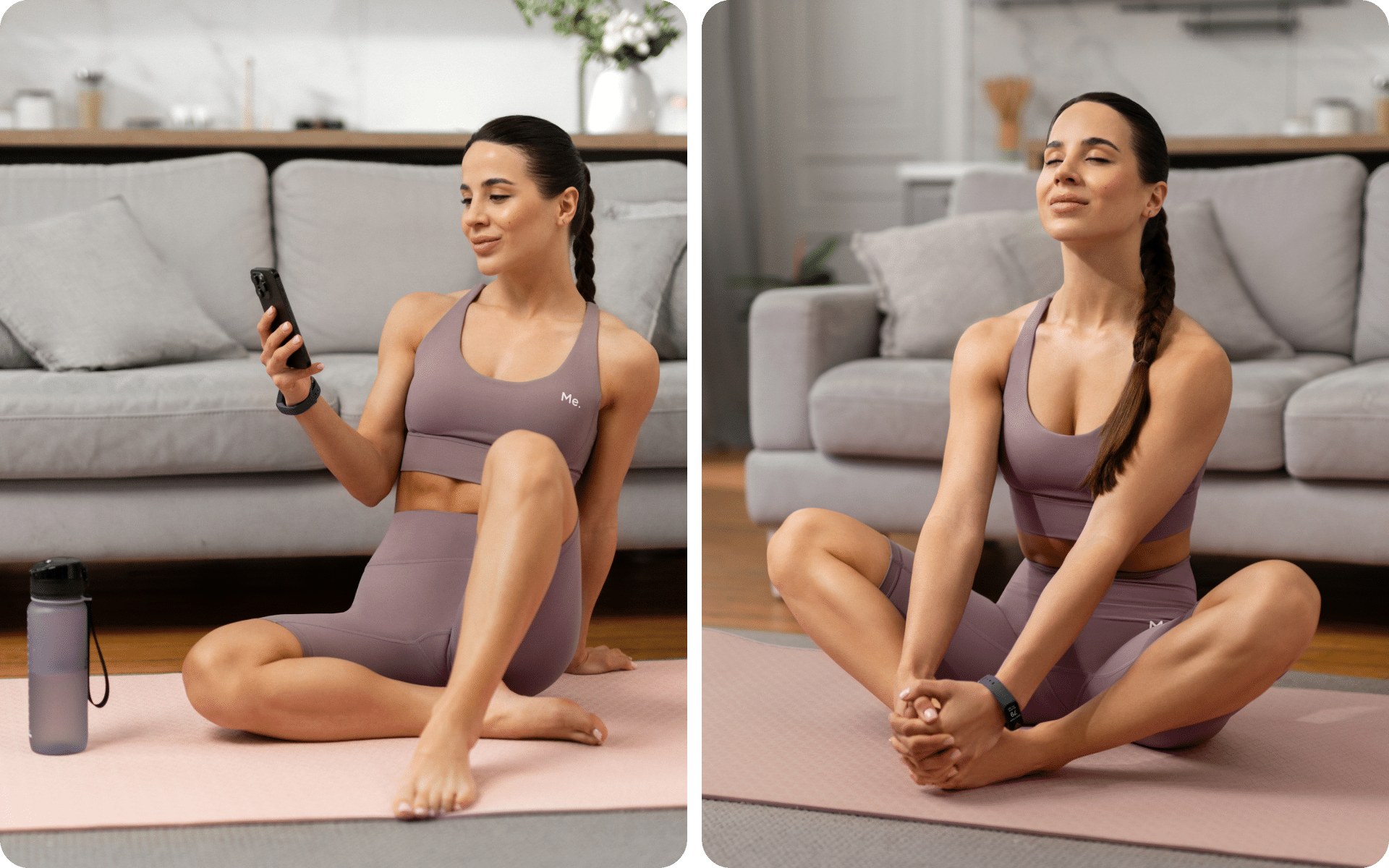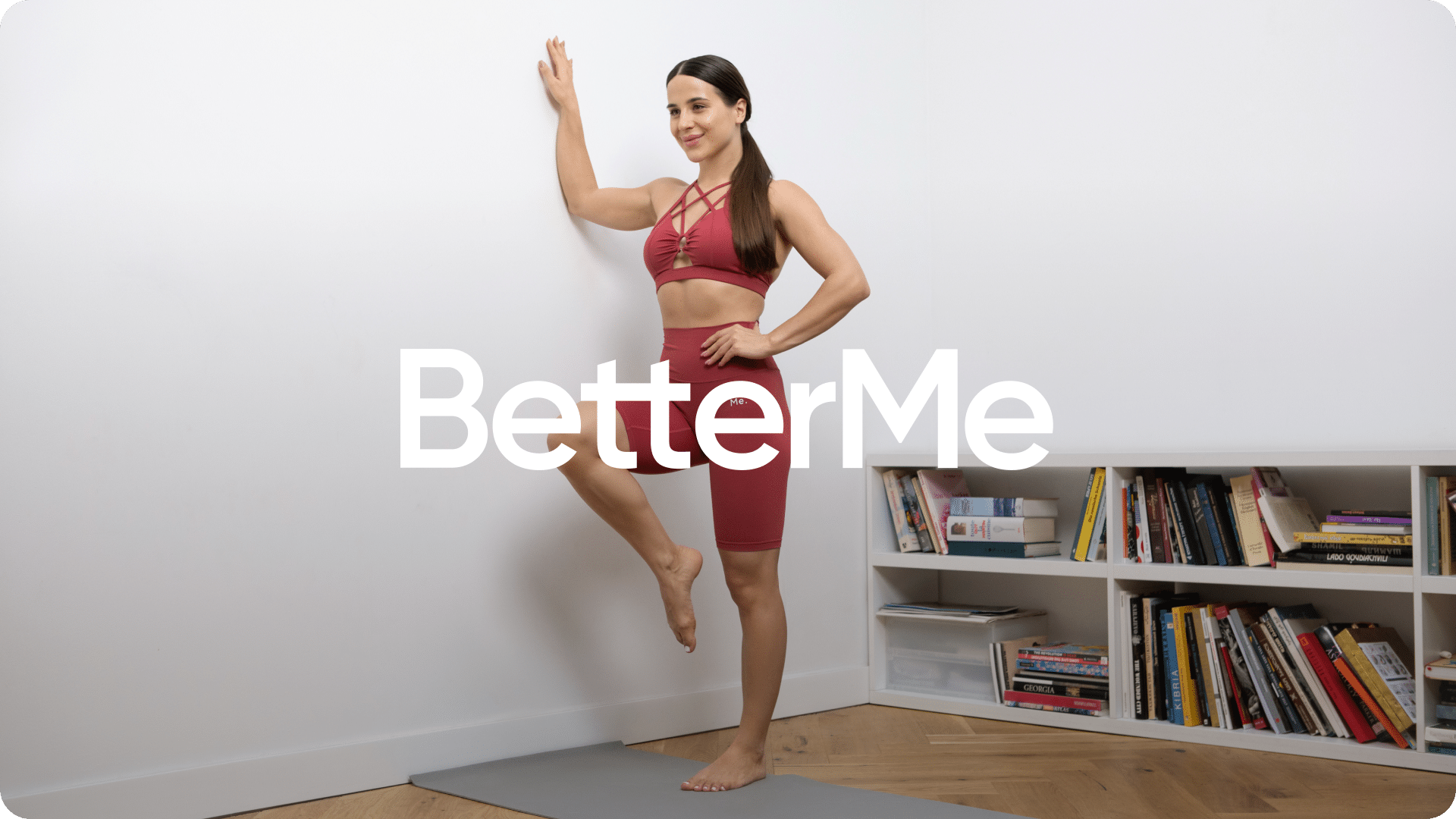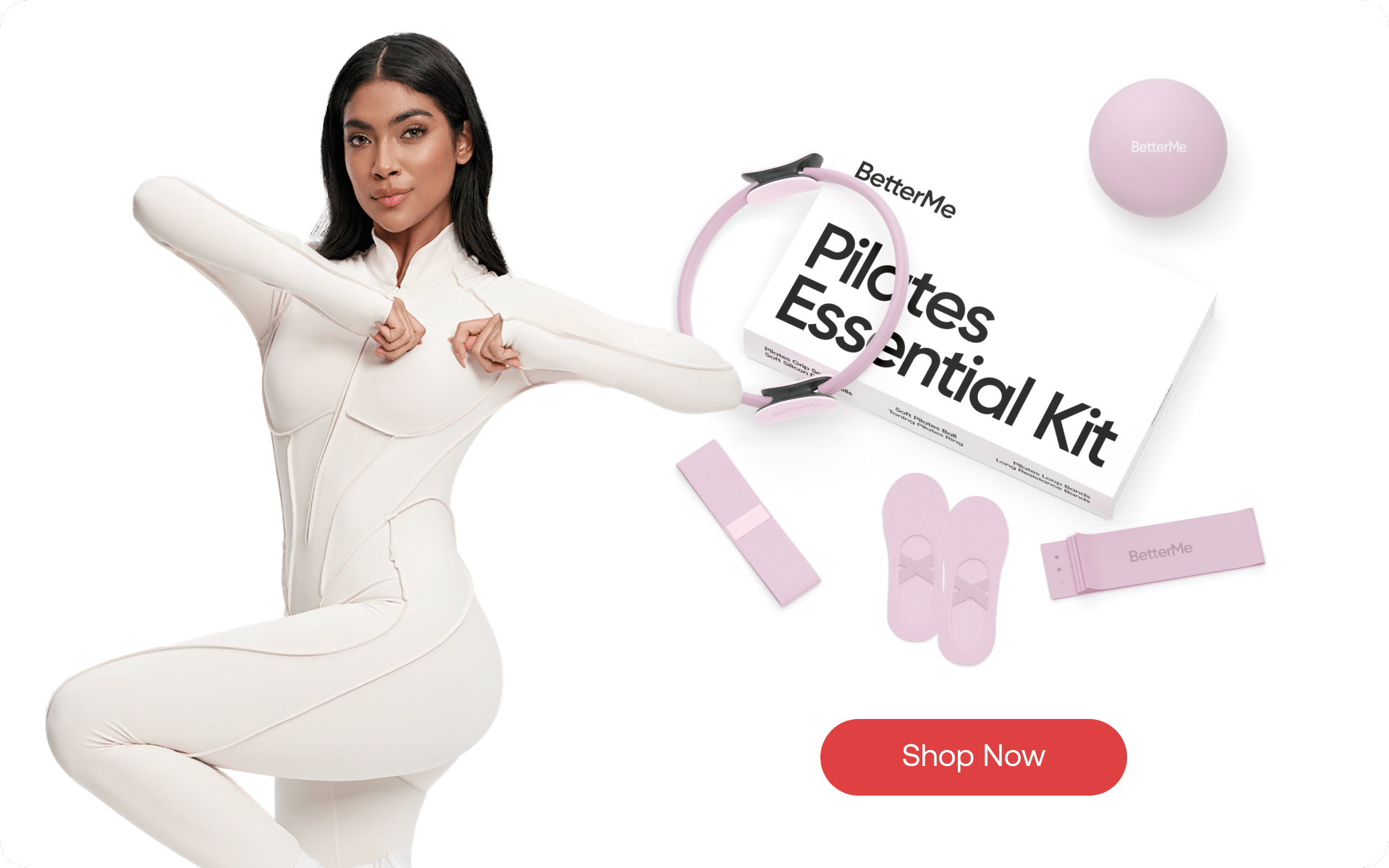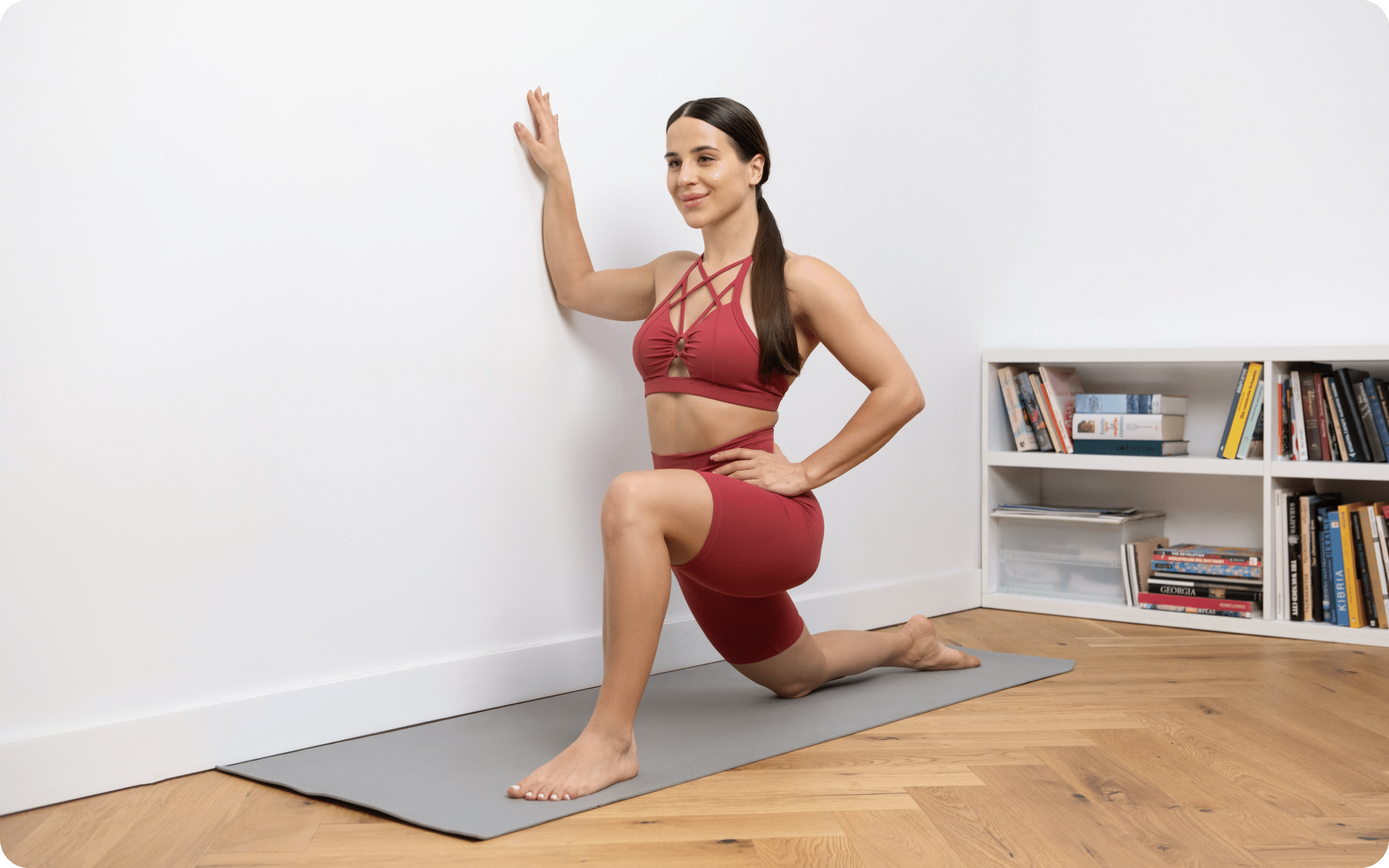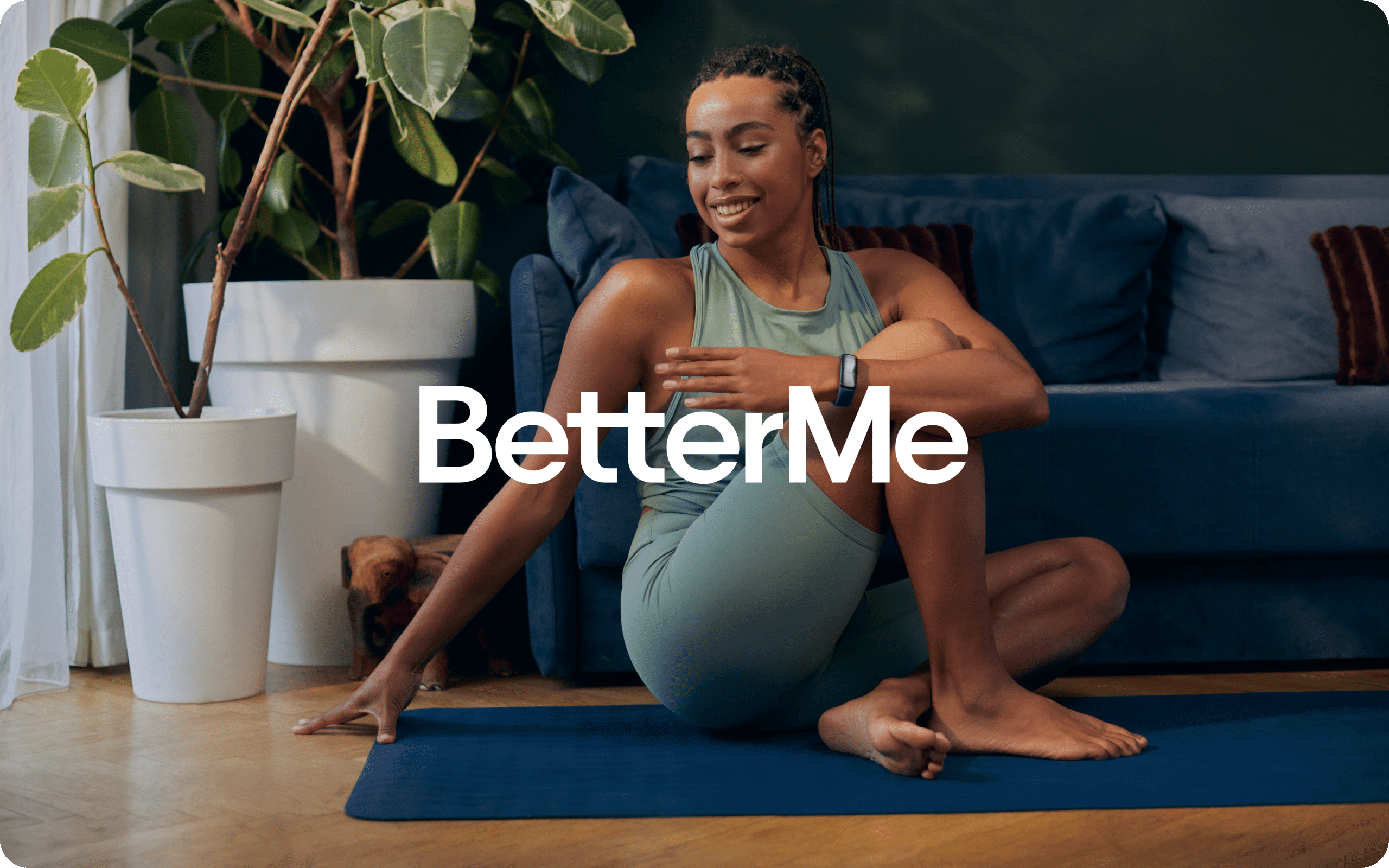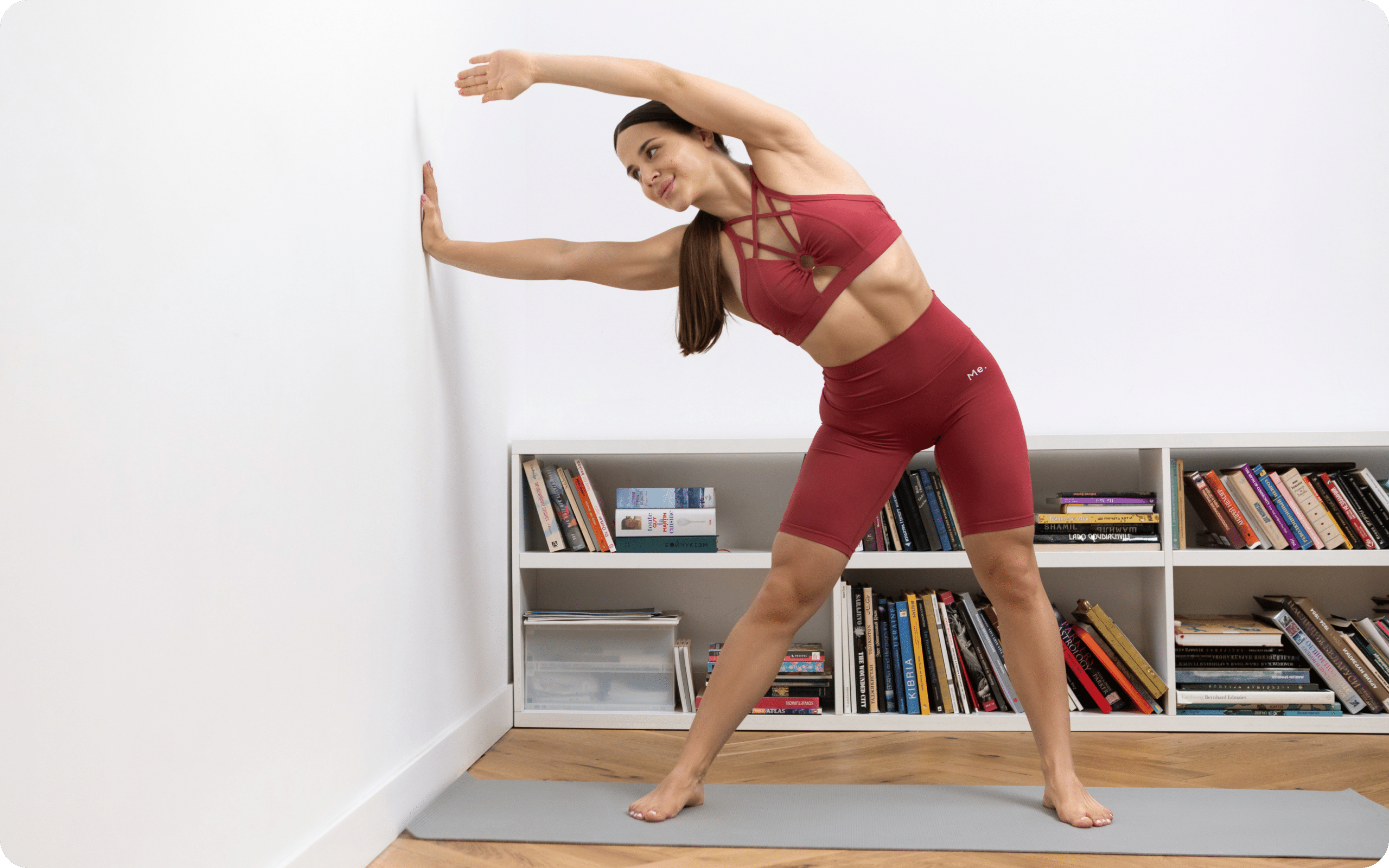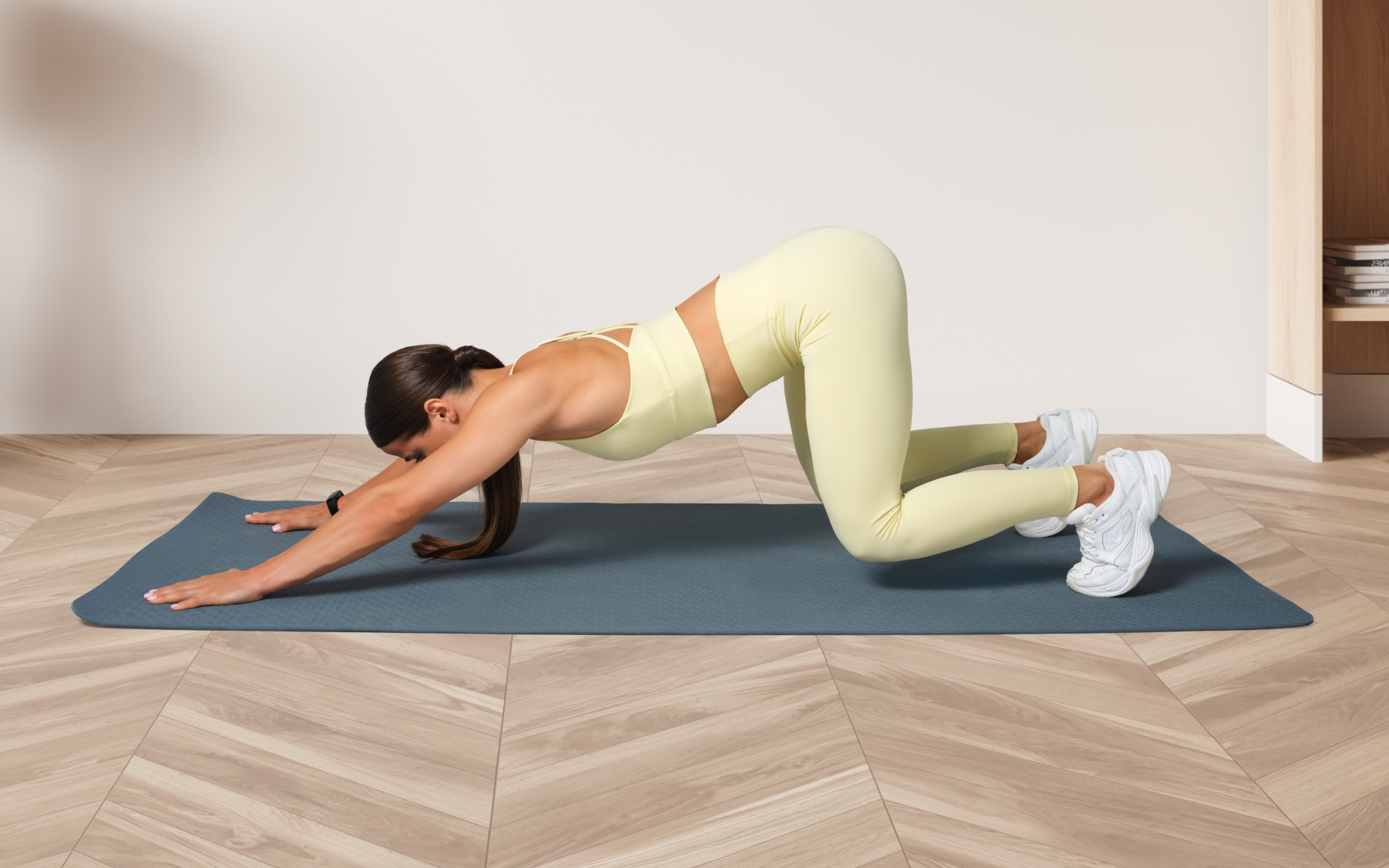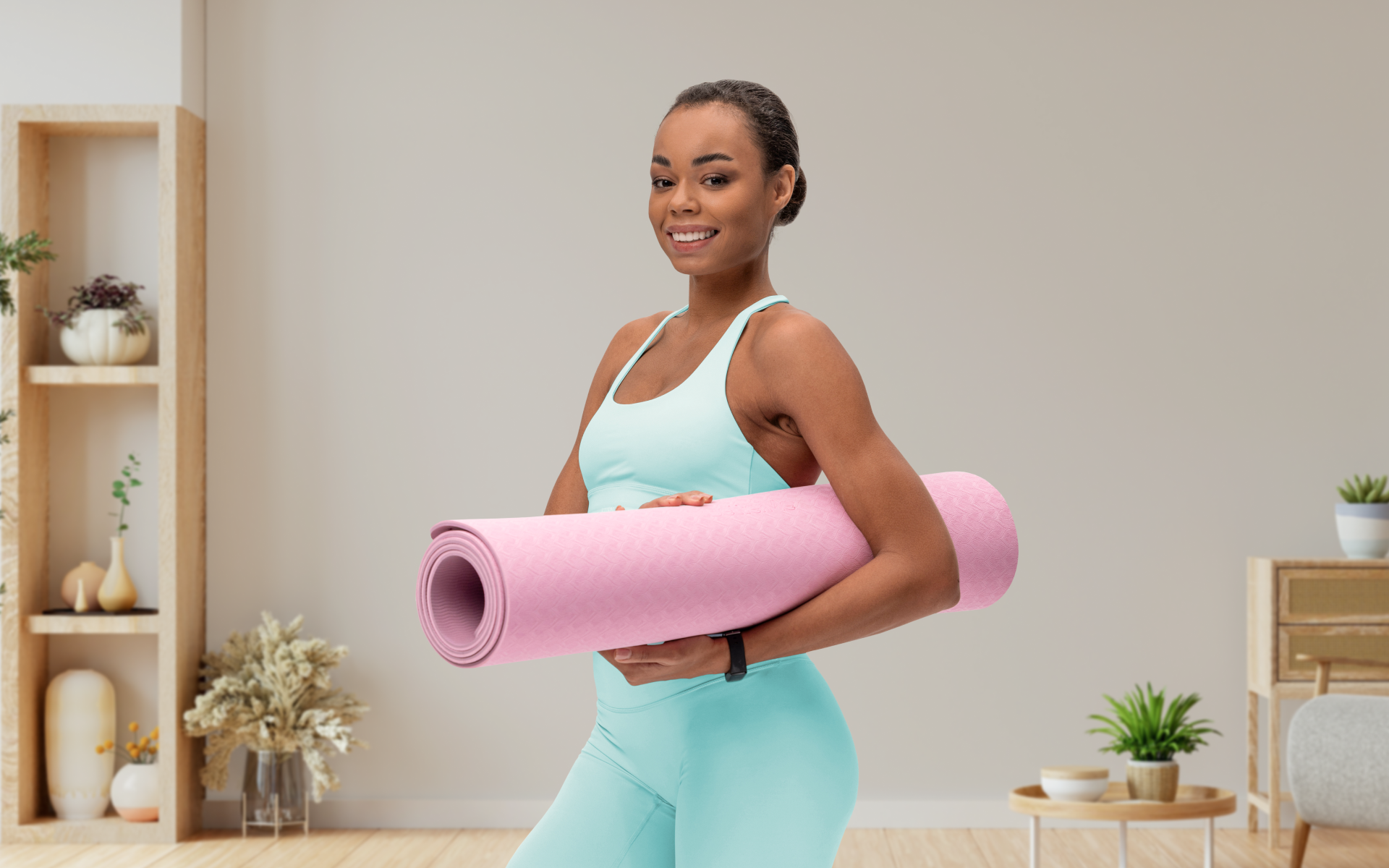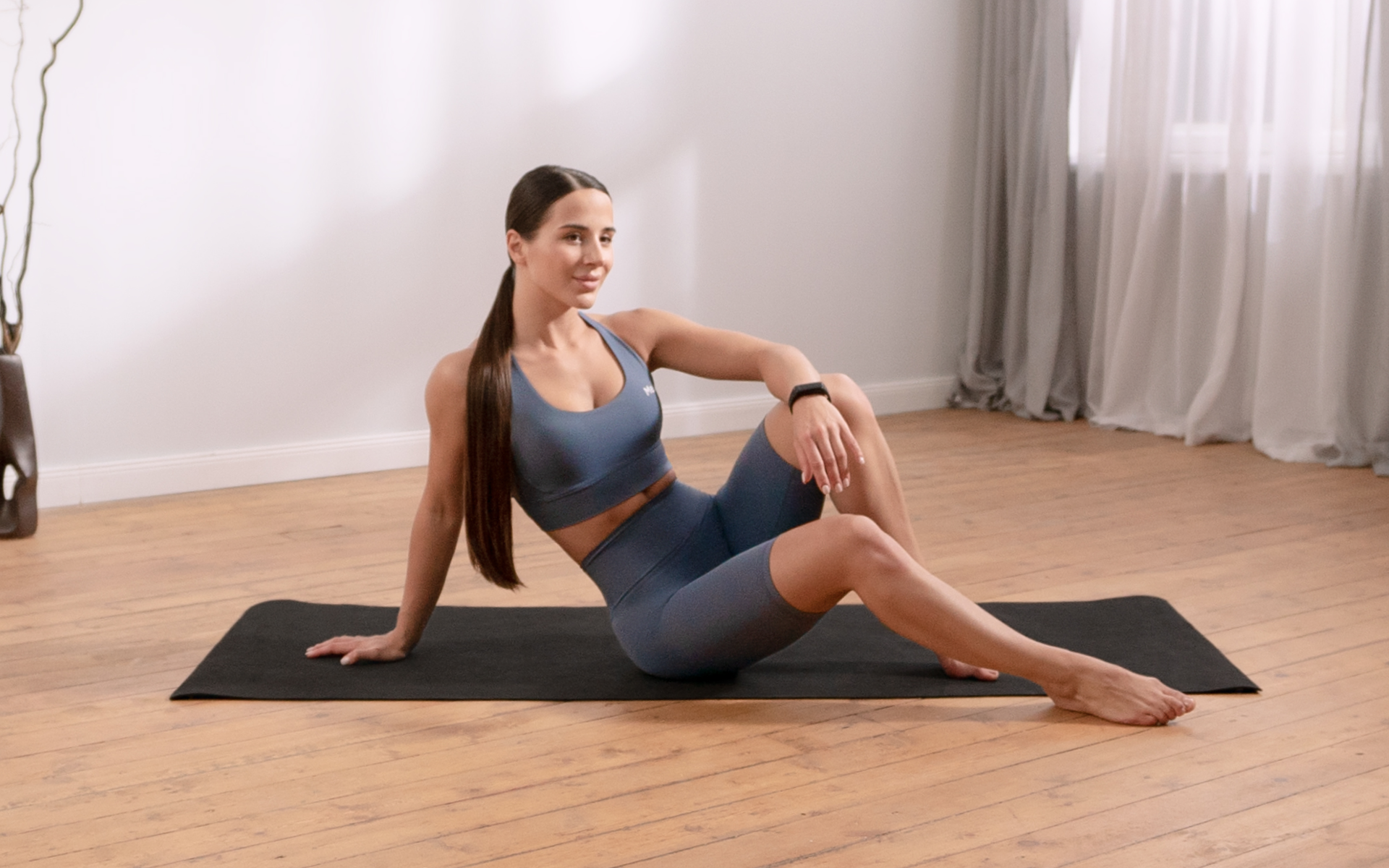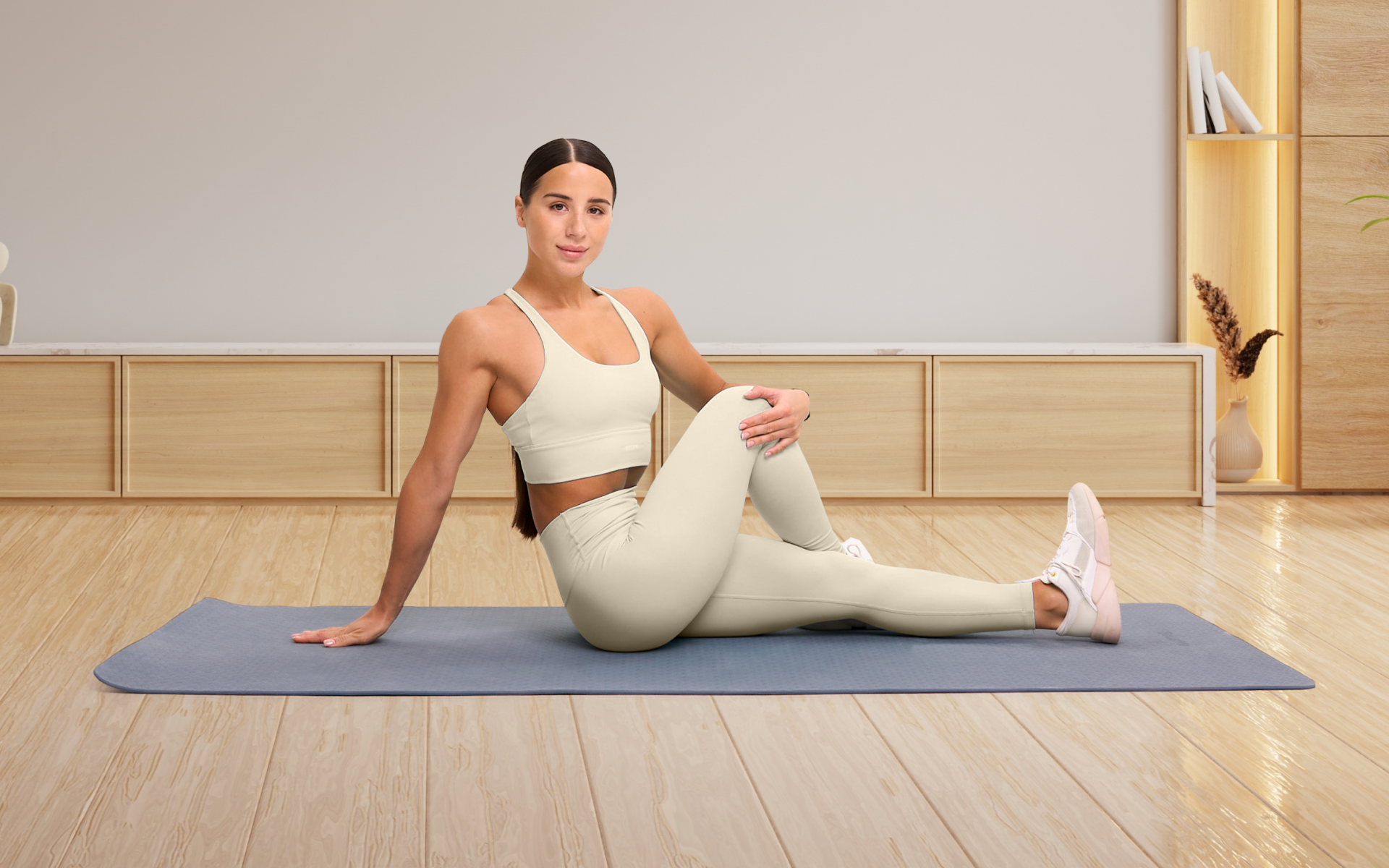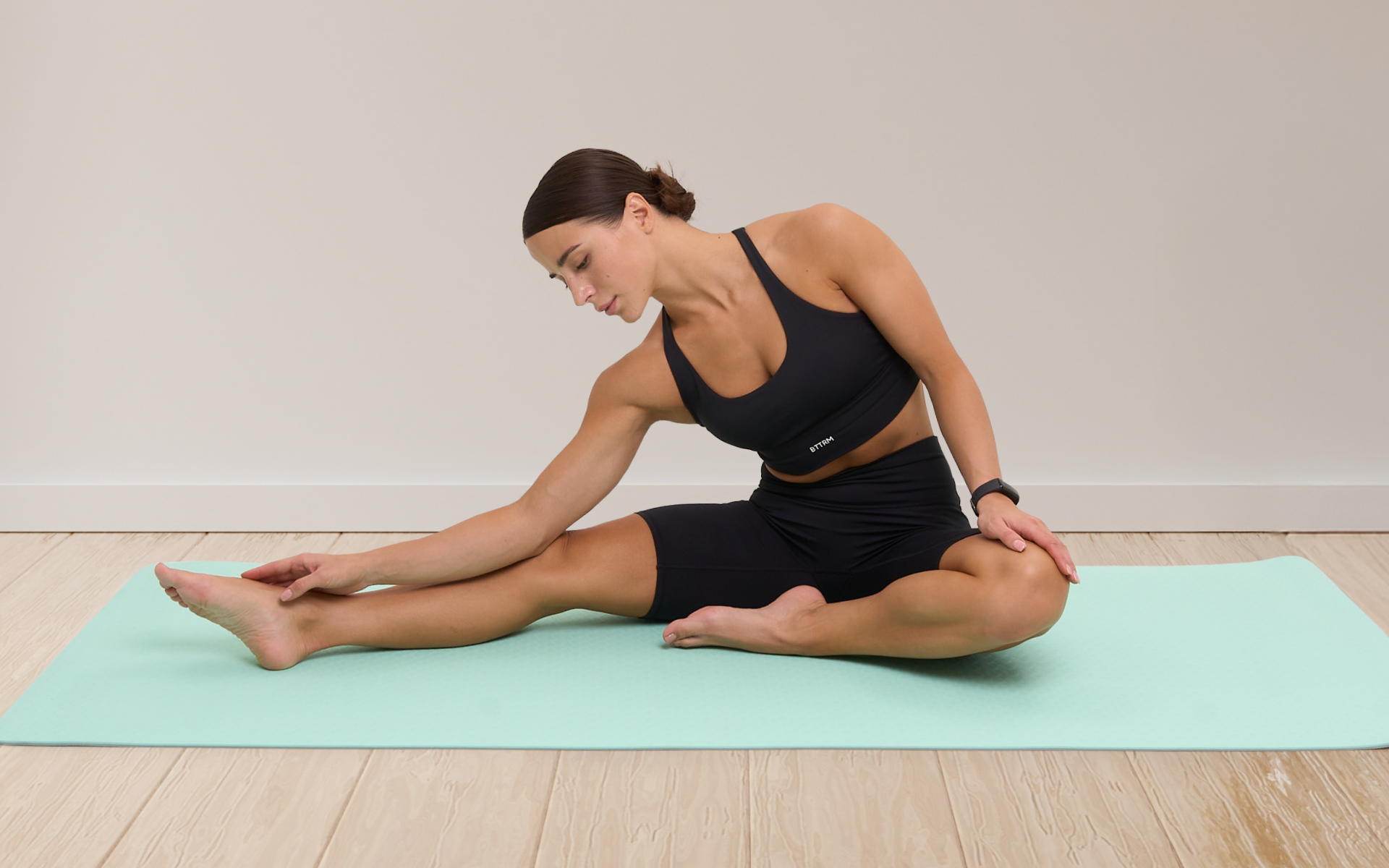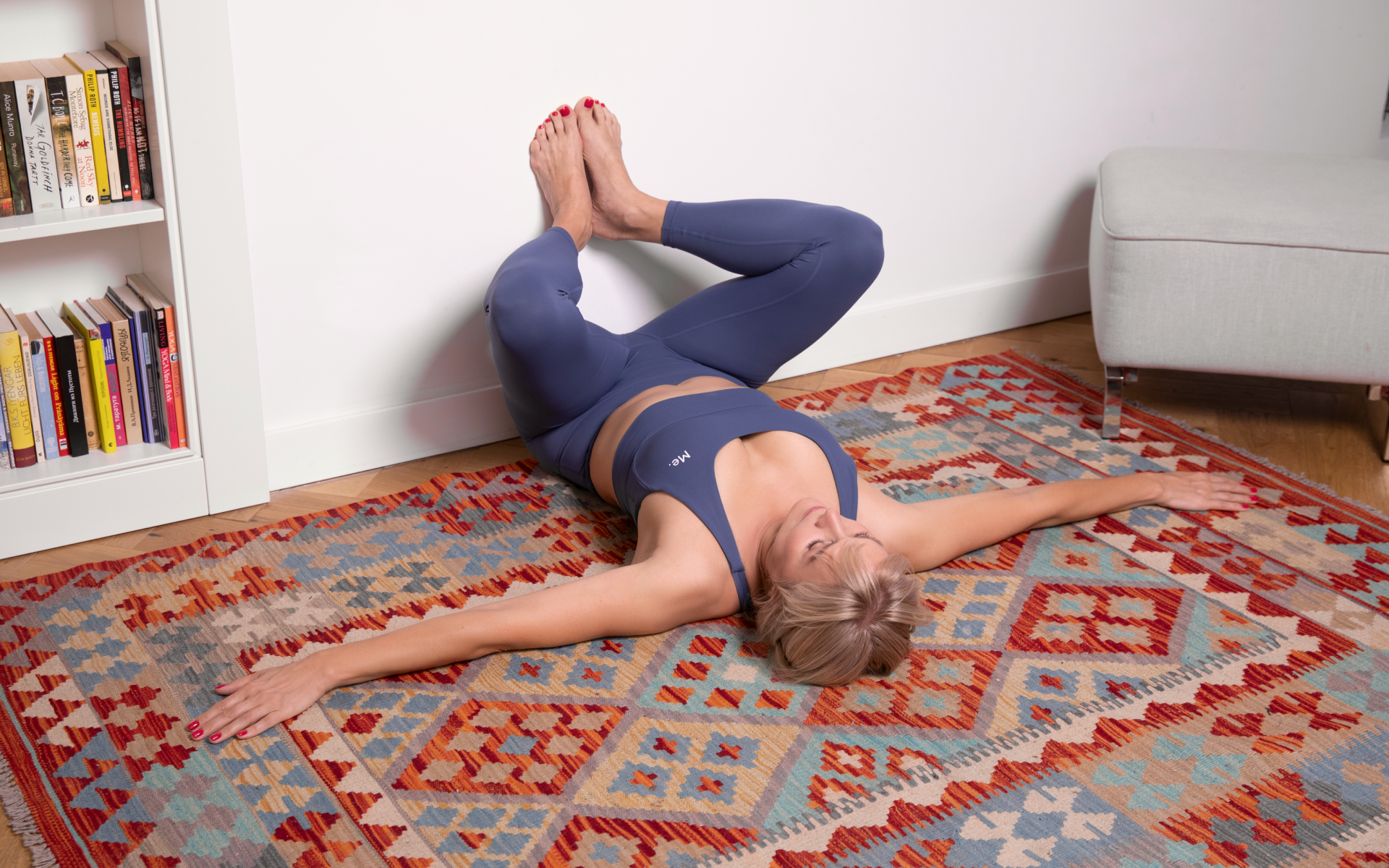Are you tired of the stubborn fat on your thighs? Do you feel like all those exercises have failed to burn the pounds, no matter how hard you try? If this is your dilemma, you might find a solution in Wall Pilates. This form of exercise combines the core-strengthening benefits of Pilates without any equipment, except a wall.
This article is meant to give you some insight into Wall Pilates exercises that specifically target the thighs. As a preparation for this workout, find some space near the wall, and place the short side of your mat against it. If you stay consistent in your Wall Pilates practice, you’ll likely begin seeing improvements in as little as a few weeks.
Keep scrolling to discover the science behind Wall Pilates and some effective exercises to get you started.
Can Pilates Slim the Thighs?
Pilates can provide an integral component of an overall improved body composition by stimulating muscular hypertrophy (muscle growth) and promoting caloric expenditure that may lead to the loss of body fat. Strength training, including the strengthening principles of Pilates, can help with improving muscle size and definition in the specific muscle groups targeted. Note, no form of exercise can “spot reduce” body fat. Body fat is decreased when a person burns more calories than they consume, and the decrease in body fat percentage occurs throughout the body, regardless of how you reach that goal. The combination of decreased body fat and increased muscle mass will lead to a more slim and defined aesthetic.
Research suggests that Pilates (including Wall Pilates), along with proper diet and caloric intake, can provide significant improvements in your overall health and fitness..
While Pilates utilizes numerous exercises that target muscle groups throughout the body, those that target the thighs the most are as follows:
Wall Squats
Wall squat variations are among the most effective and functional of all exercises. Utilizing the wall for support can be a great stepping stone to progression to higher level options.:
- Stand up straight with your back, shoulders, and butt against a wall. Your feet should be shoulder-width apart, and your body should be straight from your ears to your heels. Use a rolled towel behind your back for support if you need it.
- Take a small step forward, about half a foot, keeping your back against the wall.
- Slowly slide down the wall like you’re sitting in a chair. Don’t go too low – your thighs should be parallel to the floor, like the top of the chair.
- Hold this position for 5 seconds. When you can do this easily, try holding it longer.
- Slide back up to standing.
Wall Assisted Bridges
This is an excellent exercise to add to your routine if you spend much time behind your desk. It focuses primarily on the glutes and hamstrings. You can perform this exercise by following these steps:
- Lie on your back and put your feet up on the wall. Your knees should be bent and right above your hips, and your lower legs should be almost parallel to the floor.
- Push your feet into the wall and lift your hips off the ground like making a bridge with your body.
- Lower your hips back down to the ground.
- Continue for the desired number of reps.
Wall Squats with Arm Circles
This effective compound exercise targets the lower and upper body simultaneously. The steps to perform this exercise are:
- Stand tall with your back flat against the wall.
- Walk your feet out in front of you.
- Slowly slide down the wall until your knees are bent and your ankles are right under your knees, like sitting in a chair.
- Push your heels into the ground and act like you are pushing the floor away with your feet. You should feel your leg muscles working.
- Start with your arms straight out before you, palms touching the wall. Lift your arms over your head, then bring them back down. Keep doing this up-and-down movement.
Whether you’re a workout beast or just a beginner making your first foray into the world of fitness and dieting – BetterMe has a lot to offer to both newbies and experts! Install the app and experience the versatility first-hand!
Wall Pilates Scissors
This variation of Wall Pilates scissors primarily targets the core and glutes. To perform this exercise:
- Sit on the floor with your back against the wall, then lie down on your side.
- Scoot your bum back until it’s touching the wall.
- Roll onto your back while keeping your bum on the wall, and then put your legs straight up the wall, too.
- Move your legs apart until they are about as wide as your hips. Press your feet into the wall to lift your hips a little. Keep your head, shoulders, and upper back on the floor.
- Put your hands on your hips to help hold them up.
- Walk your feet up the wall until your legs are straight up. Tighten your tummy muscles by pulling your belly button towards your spine, and squeeze your bum to keep your body steady.
- Slowly bring your right leg down towards your face and the floor. Hold it briefly, then push it back to the wall. You should feel a stretch in the back of your leg.
- This is one repetition. Do 15 to 20 repetitions with each leg. You can do all the reps on one leg first or switch back and forth between legs.
It’s impossible to choose which exercise wins the crown as the best Wall Pilates exercise for toned thighs, but by utilizing the exercises outlined here, while integrating other forms of aerobic and strength training to your fitness routine, you’ll likely see great results.
Wall Pilates for Thighs: Does Wall Pilates Tone Legs?
A toned aesthetic comes from good muscle definition, combined with a healthy body fat percentage. Wall Pilates can be an important piece of the puzzle when it comes to achieving this look. Here’s why:
- Muscle Activation: Among other things, Wall Pilates is a form of strength training. By participating in a program that places adequate stress on the major muscle groups of your thighs (specifically the hamstrings and quadriceps), you will be promoting muscular hypertrophy which will enhance the aesthetic of these muscle groups.
- Calorie Burn: Wall Pilates can be adapted for just about any level of intensity. If weight loss is your goal, moderate to high intensity sessions can increase caloric expenditure during your workout, but also increase your basal metabolic rate leading to increased calorie burn throughout the day even when you’re not working out. This paired with a proper diet can lead to a healthy body composition.
- Wall Pilates is different from the traditional Pilates, but shares many of the same principles and benefits. By using a wall as your resistance, you can incorporate an exercise routine that can be completed just about anywhere.
- When you get started on your Wall Pilates journey, focus on your form and be patient. Asyou learn the exercises, you’ll find it is a great way to add variety, challenge, and fun to your workout!
Read More: Wall Pilates Workouts: Can They Help With Weight Loss?
Does Wall Pilates Really Work?
Yes, Wall Pilates can benefit those who consistently practice it. These involve controlled movements and muscle engagement to improve stability, flexibility, and strength in the legs, hips, and glutes. Some benefits of Wall Pilates are as follows:
It Doesn’t Cost Anything
Unlike some forms of exercise, you don’t need any equipment to perform Wall Pilates. Although the exercises resemble the ones performed in conventional Pilates, the wall creates a stable surface to leverage a person’s body weight as resistance. This provides benefits similar to those provided by a reformer in traditional Pilates, but at no extra cost.
It Is Suitable for Beginners
Since Wall Pilates can be done in the comfort of your home and with endless adaptations and regressions, it provides the perfect starting point for those beginning their Pilates journey. The wall can be used as much for support as it is for resistance, creating a low barrier of entry.
It Can Improve Core Strength
One of the primary focus points in Pilates is the development of core strength and stability. Wall Pilates follows the same basic principles developed by Joseph Pilates in the early 1900s, but in a more approachable and affordable manner. Just as you can develop a strong core with traditional Pilates, you can find the same benefits with Wall Pilates.
It May Enhance Spinal Alignment
While changing the anatomical alignment of the spinal vertebrae is not possible with any form of exercise (no matter what social media tells you), Wall Pilates places a strong emphasis on control and alignment through a variety of movement patterns. This carries over to improved postural awareness in everyday life.
It Can Reduce Back Pain
Some research suggests that improving the strength of muscle groups surrounding the lumbar and abdominal region (aka the “core”) may lead to improved function and quality of life for individuals with low back pain (3). Since Wall Pilates places a great focus on core strength, it may be a beneficial therapeutic modality for individuals with this condition.
It Improves Mental Wellness
One of the profound rewards of Wall Pilates is its positive impact on mental health. The movements and control included in these exercises can de-stress and calm your nerves (8). Regular practice helps you focus on the present moment, which has been shown to slow down the aging of your brain and help fight depression. The inward focus required for these exercises can clear your mind and improve your feelings (4).
Intense sweat sessions, working weight loss tips, lip-smacking recipes come in one package with the BetterMe app. And all of it is at your fingertips, start transforming your life now!
It Can Enhance Blood Circulation
Poor blood circulation can cause several health issues like swelling, fatigue, and varicose veins. Like most forms of exercise that incorporate full body movements and increase oxygen transportation and heart rate, Wall Pilates can improve your blood circulation by boosting fluid movement across the body (6).
The rewards included in Wall Pilates clearly show that this form of exercise can significantly positively impact physical and mental health. You can also add more precise movements like Pilates ring workouts, which add more resistance to your exercise regimen.
Besides Wall Pilates, holistic wellness can be achieved with other therapies like meditation, yoga, sound therapy, and aromatherapy. These therapies have unique benefits, so adding them to your regimen can lead to overall wellness and happiness.
Does Pilates Tone Inner Thighs?
Yes, Pilates can effectively tone your inner thighs. Many exercises included in Wall Pilates specifically target the muscles of the inner thighs through controlled movements focusing on muscle engagement. The following are some Wall Pilates exercises for inner thighs:
Wall-Lying Inner Thigh Lift
- Sit on the floor with your back against a wall.
- Bend your knees so that they are at a right angle (90 degrees).
- Place a foam roller or a yoga block between your knees.
- Squeeze your knees together, squeezing the foam roller or yoga block. You should feel this in your inner thigh muscles.
- Hold this position for 10-15 seconds.
- Switch the position of your feet if you need to, and repeat steps 4 and 5.
Side Lying Leg Lift against the Wall
- Lie on your side with a mat under you and your back against the wall. Bend your lower arm to support your head and neck. Place your other arm around your top hip to feel your butt muscles working. Keep both legs straight with your top leg on the baseboard.
- Keep your back straight and turn your top leg so your toes point up at the ceiling (this works your side butt muscle better). Tense your butt muscles and slowly slide your top leg up the wall, keeping your heel on the wall.
- Hold for 2-3 seconds and slowly lower your leg.
- Use a resistance band ankle weight to make it harder, or try it in a side plank position.
- Aim for 15-20 repetitions and 2 sets to build endurance.
Wall Bridge Inner Thigh Squeeze
- Stand about a foot away from a wall with your arms at your sides and feet shoulder-width apart.
- Reach your arms back until your palms touch the wall with your fingers pointing down.
- Slowly bend backwards, feeling each bone in your spine move one at a time until your head lightly touches the wall.
- Hold for one second.
- Slowly, come back up to standing.
- Hold for one second.
- Repeat 3-6 times.
Read More: Wall Pilates Scissors: Work The Core & Stretch The Legs In These Simple Moves
Wall Sit Inner Thigh Lift
- Stand with your back flat against the wall and feet shoulder-width apart, about two feet from the wall.
- Slowly slide down the wall like sitting in a chair, keeping your back flat and tightening your tummy muscles.
- Stop when your legs are bent at a right angle, like the top of a chair, and your knees are right above your ankles.
- Hold this position and keep your tummy muscles tight.
- When you are done, slowly stand back up, using the wall for support.
Adding these exercises to your Wall Pilates routine can tone and strengthen your inner thighs. This can improve your muscle definition and overall leg strength. You can perform thigh-focused exercises 2 – 4 times a week, along with cardio or upper-body strength training. If you are concerned about belly fat, you can also make a combo with 7 wall exercises for a flat stomach. This combination can help you to get a slimmer tummy while working on defined thighs.
FAQs
What is the best exercise for slim thighs?
Some exercises that can help improve muscle definition in your thighs include wall-assisted bridges, wall squats, and Wall Pilates scissors. Focusing on proper diet and other lifestyle choices will be even more important to achieve a healthy body fat percentage and slimmer thighs.
Why do my thighs hurt after Pilates?
Your thighs hurt after Pilates because of muscle fatigue and microscopic muscle tears. This discomfort is known as delayed onset muscle soreness (DOMS). It happens most intensely when you start a new exercise regimen or intensify your workout program. Contrary to popular belief, DOMS is not caused by lactic acid buildup.
Does the 28-day Wall Pilates work?
The 28-day Wall Pilates program is effective if it is followed consistently. It focuses on improving flexibility, strengthening the core, and enhancing overall fitness. The outcomes depend on individual efforts, consistency, and initial fitness level.
How often should you do Wall Pilates?
Perform Wall Pilates 3-4 times weekly to become stronger and more flexible. This gives your muscles time to rest and get stronger. If you are new to exercise or you’re feeling sore, decrease your frequency.
What is the difference between Pilates and Wall Pilates?
Wall Pilates is a variation of traditional Pilates that uses a wall for support and resistance. This is in contrast to traditional Pilates practice which typically uses reformers and other special equipment.
Summary
You must make sure you warm up properly and maintain proper form while doing Wall Pilates for thighs. Try to perform every exercise in a slow and controlled way to maximize muscle engagement. Like most things, doing wall Pilates regularly will get you the best results.
If you are new to this, try the free 28-day Wall Pilates challenge. It gives you daily exercises to help you become more robust and flexible. By the end of the challenge, you may be used to exercising every day and be ready to do longer workouts to keep improving. Consult your doctor before beginning any new exercise program.
DISCLAIMER:
This article is intended for general informational purposes only and does not serve to address individual circumstances. It is not a substitute for professional advice or help and should not be relied on for making any kind of decision-making. Any action taken as a direct or indirect result of the information in this article is entirely at your own risk and is your sole responsibility.
BetterMe, its content staff, and its medical advisors accept no responsibility for inaccuracies, errors, misstatements, inconsistencies, or omissions and specifically disclaim any liability, loss or risk, personal, professional or otherwise, which may be incurred as a consequence, directly or indirectly, of the use and/or application of any content.
You should always seek the advice of your physician or other qualified health provider with any questions you may have regarding a medical condition or your specific situation. Never disregard professional medical advice or delay seeking it because of BetterMe content. If you suspect or think you may have a medical emergency, call your doctor.
SOURCES:
- Association of Continuous Vertebral Bone Bridges and Bone Mineral Density with the Fracture Risk in Patients with Diffuse Idiopathic Skeletal Hyperostosis (2022, ncbi.nlm.nih.gov)
- Back Pain (n.d., niams.nih.gov)
- Effects of core stabilization exercise and strengthening exercise on proprioception, balance, muscle thickness and pain related outcomes in patients with subacute nonspecific low back pain: a randomized controlled trial (2021, https://doi.org/10.1186/s12891-021-04858-6)
- How Does Exercise Improve Implicit Emotion Regulation Ability: Preliminary Evidence of Mind-Body Exercise Intervention Combined With Aerobic Jogging and Mindfulness-Based Yoga (2019, researchgate.net)
- Pilates (2011, ncbi.nlm.nih.gov)
- Pilates – health benefits (n.d., betterhealth.vic.gov.au)
- Pilates: how does it work and who needs it? (2011, ncbi.nlm.nih.gov)
- The Impacts of Pilates and Yoga on Health-Promoting Behaviors and Subjective Health Status (2021, ncbi.nlm.nih.gov)
